Your company is chasing bold results—but something keeps getting in the way. Again and again, your corporate culture seems to sabotage your efforts. Should you push forward anyway? Or is this just the way things are?
As a seasoned executive, you’ve seen a variety of workplace environments—some vibrant and inspiring, others toxic and draining. You know how much culture matters. Yet, you might still be unsure whether it’s worth focusing on. Culture often feels vague and untouchable. Should you even bother trying to change it?
Before you give up, here’s a practical way to look at culture that might change your mind.
Culture, Defined
You’ve probably heard Edgar Schein’s famous phrase: “The way we do things around here.” That’s a simple, usable definition of corporate culture. I take it a step further and suggest this: Culture consists of the automatic, habitual behaviours that happen without anyone thinking too hard.
Take meetings, for instance. Do they start on time? Do they end as scheduled? Is it okay for someone senior to show up late? The answers to these questions reflect ingrained norms—habits everyone follows without being told. These invisible rules guide actions which add up to what we call “culture.”
Changing these norms can be tricky. At a macro level, formal initiatives like Business Process Management (BPM) can help define and improve the activities that drive value. These methods are well understood and widely applied.
But at the micro level—where people interact in meetings, emails, and casual chats—there’s often no playbook. These day-to-day behaviours tend to evolve on their own, without guidance.
That’s where things get messy. Without structure, informal communication fills the gap. Stories, rumours, and assumptions spread like wildfire as people try to make sense of what’s acceptable and what’s not.
Still, you’re not powerless. There is something you can do.
Conversations Shape Culture
One powerful lever for change is everyday conversation. If you’ve ever switched jobs or moved to a different country, you’ve likely felt the shift: new phrases, new topics, new tones. What people talk about—and how—can differ dramatically.
Consider this: in The Trinidadian Executive in Jamaica study, we found that foreign leaders often felt awkward in Jamaican offices. Why? They were surprised by how formal local workplaces were.
Most Jamaicans don’t even notice this, but we often address leaders with lofty titles—“General,” “Boss Lady,” or “Sir Francis.” It’s a form of respect.
But to some Trinidadians, this feels like a barrier. Their culture celebrates an egalitarian ideal—“All Ah We Is One.” Using made up titles seems to contradict that value and introduces a hierarchy they’d rather avoid.
This small example illustrates a bigger point: culture lives in language. And once you can see the patterns, you can influence them. As Dr. Fernando Flores suggests, organisational life is really a network of conversations. Shifting this network is shifting the culture.
Becoming Literate About the Future
Every organisation has its eyes on the future. But few realise how much our view of what is going to happen shapes our experience of the present.
It’s why people are often in better spirits on Friday afternoons than on Sunday nights. Even if they’re still at work, the prospect of the weekend lifts their mood.
Yet most managers aren’t trained to talk about the future with any real skill. Instead, they fall back on vague optimism—or, worse, helpless pessimism. That’s a missed opportunity.
Dr. Riel Miller, a leader in the field of Futures Literacy, argues that we’re more effective when we treat the future as something we can shape, not something that’s already decided. Here are three key insights from his work:
The future is open. It’s not set in stone.
It affects us now. For some, it energises; for others, it weighs heavily.
Leaders can help teams pursue viable, meaningful futures—even in the face of uncertainty.
This means the way leaders talk about the future matters—a lot. Many fall into the trap of writing vision statements that sound inspiring but lack substance. Others go to the opposite extreme, declaring ambitious goals no one really believes.
A better approach? Develop a clear, realistic long-term vision—one that aligns with your strategy. Then use that vision to shape how people think, act, and talk.
This future-focused perspective becomes a powerful tool for transforming culture. In uncertain times, when fear is common and change is constant, a shared view of what’s possible can unite and energise your organisation.
When you connect culture with vision and strategy, you create a resilient system—one that can keep moving forward, even through turbulent periods. Over time, this foundation enables your team to build momentum and stay inspired.
And that’s when the real transformation begins.
This article is based on a Jamaica Gleaner column.


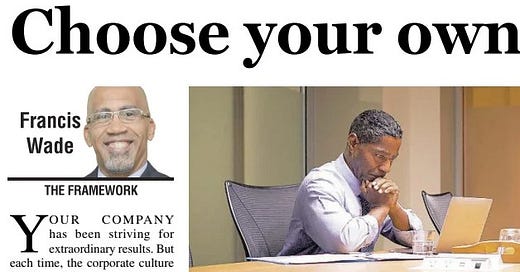




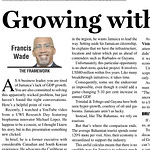
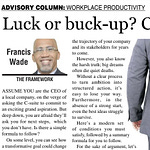



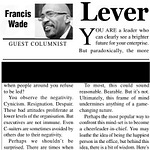
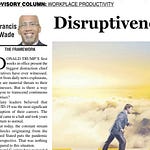
Share this post